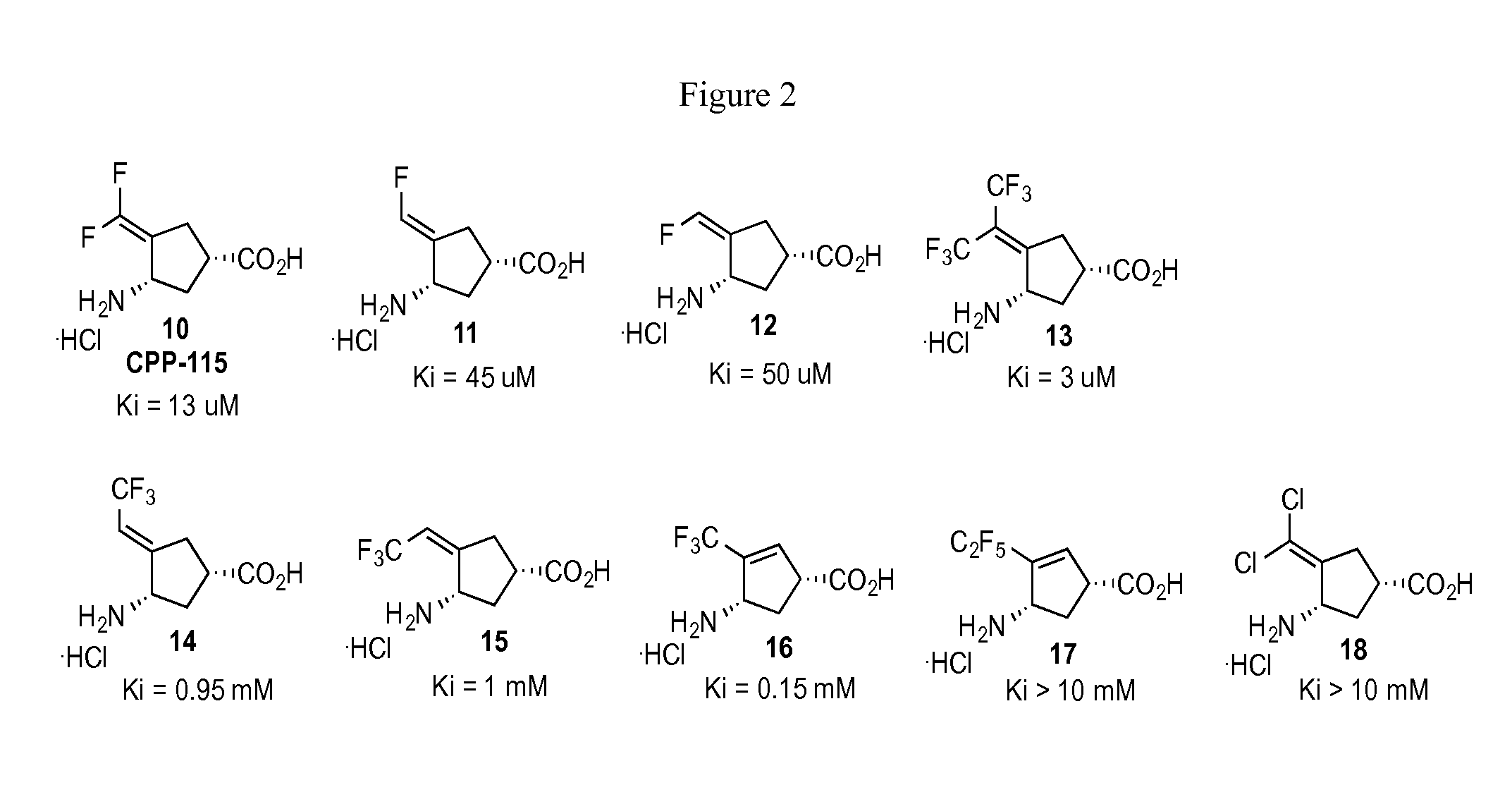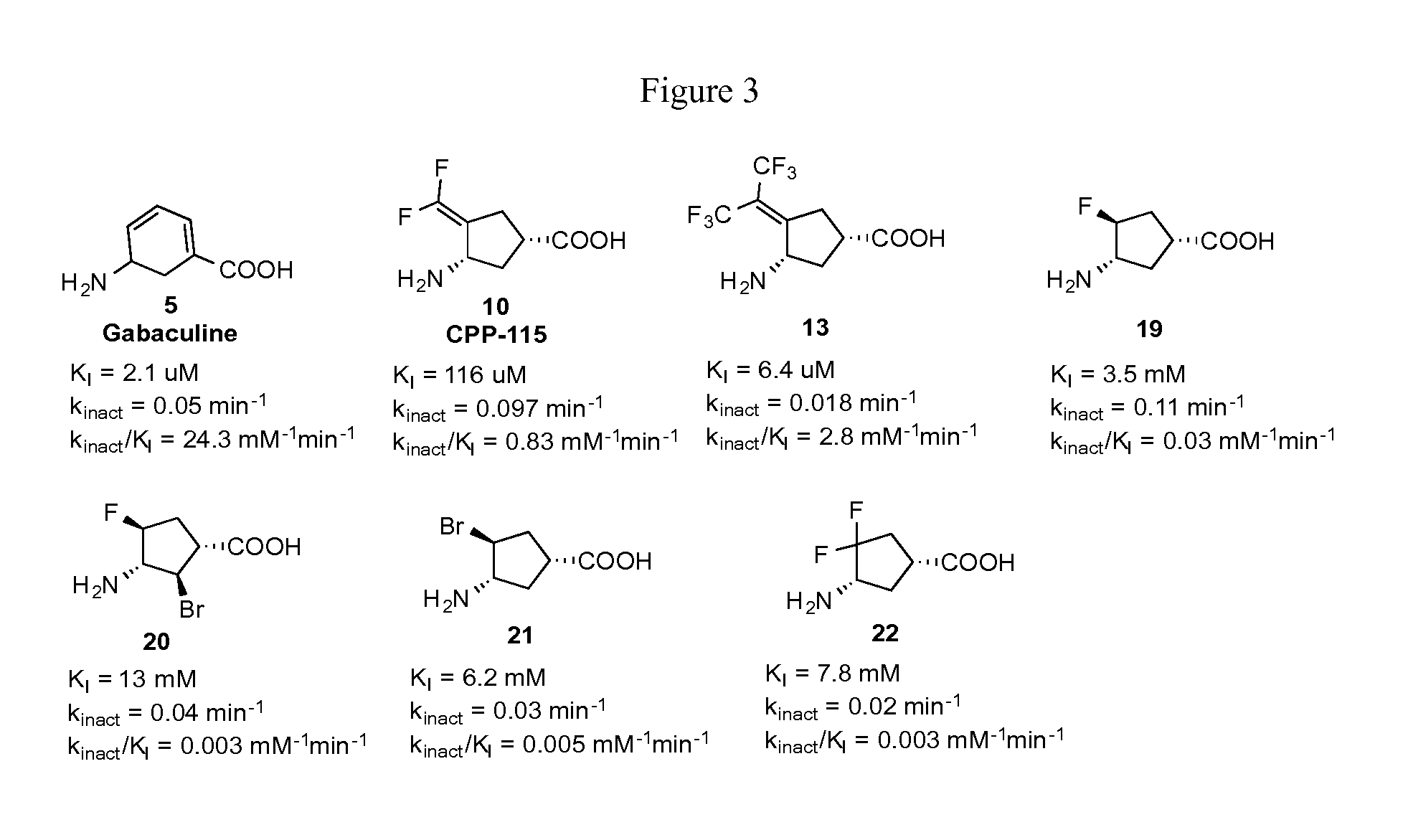Ornithine Aminotransferase Inhibition with GABA Analogues for Treatment of Hepatocellular Carcinoma
a technology of ornithine aminotransferase and gaba analogues, which is applied in the direction of biocide, drug composition, peptide/protein ingredients, etc., can solve the problems of poor hcc prognosis, ineffective current therapies available to the clinician as a cure, and hepatic disease most often limits survival, etc., to suppress tumor growth, suppress tumor size, and suppress serum afp levels
- Summary
- Abstract
- Description
- Claims
- Application Information
AI Technical Summary
Benefits of technology
Problems solved by technology
Method used
Image
Examples
example 1
[0056]Psammomys obesus, the sand rat, is a desert gerbil used as a model of proliferative disorder and, because spontaneous hepatic preneoplastic and hepatomas have been described in sand rats, a model for hepatocellular carcinoma. Spontaneous hepatocellular carcinomas (HCCs) were observed in 12-month old sand rats; histologic examination revealed malignant changes include excessive pleomorphism, loss of trabecular pattern, penetration of the tumor across the wall of hepatic veins, and HCC. DNA microarray-based gene expression analysis was performed comparing spontaneous HCC-developing and normal livers. Analysis of the microarray data identified seven genes whose expression levels had increased and 143 genes whose expression levels had decreased in tumor tissues compared to normal livers. OAT was one of the most prominent genes upregulated in all tumors. As discussed above, OAT is a mitochondrial enzyme for transamination of ornithine to glutamine, and was found to be a beta-cateni...
example 2
[0057]Two new continuous assays for OAT were developed for high-throughput readout that are more sensitive than previous methods and measure activity in real time. (Juncosa, J. I.; Lee, H.; Silverman, R. B. Two continuous coupled assays for ornithine-δ-aminotransferase. Anal. Biochem. 2013, 440, 145-149.) One assay is based on the reduction of 3 (Scheme 1) by Δ1-pyrroline-5-carboxylate reductase 1 (PYCRI), following the oxidation of NADH spectrophotometrically, and is suitable to study the activity of small molecule inhibitors / inactivators of OAT. (The Ki values for each with OAT is shown in FIG. 2.) The second assay is based on the formation of L-glutamate (4, Scheme 1); this can be used to measure substrate activity of small molecules with OAT. With these two assays in hand, the activity of a variety of compounds made previously as potential inhibitors of GABA-AT were investigated. (Corresponding KI and kinact values are shown in FIG. 3.)
[0058]Time-Dependent Inhibition of OAT by G...
example 2b
Inactivation of OAT by CPP-115 and Dialysis of the Inactivated Enzyme
[0061]OAT (30 μg) is pre-incubated for 24 h with 2 mM CPP-115 in 100 mM pyrophosphate buffer (pH 8.0) containing 5 mM alpha-ketoglutarate in a total volume of 60 μL at room temperature. OAT incubated without the inactivator serves as a control. After 24 h, the enzyme solutions are transferred to a D-Tube™ Mini dialyzer and exhaustively dialyzed against the buffer (100 mM pyrophosphate buffer containing 0.1 mM alpha-ketoglutarate and 0.1 mM PLP, pH 8.0) at 4° C. protected from light. The dialysis buffer is exchanged three times every 4 h and left overnight. After 48 h of dialysis, the remaining OAT activity in each of the solutions is assayed.
[0062]For the determination of KI and kinact values, the natural logarithm of the percentage of remaining OAT activity is plotted against the pre-incubation time at each inhibitor concentration to obtain the kobs (slope) value for each concentration. The kobs is the rate consta...
PUM
| Property | Measurement | Unit |
|---|---|---|
| median survival time | aaaaa | aaaaa |
| volume | aaaaa | aaaaa |
| pH | aaaaa | aaaaa |
Abstract
Description
Claims
Application Information
 Login to View More
Login to View More - R&D
- Intellectual Property
- Life Sciences
- Materials
- Tech Scout
- Unparalleled Data Quality
- Higher Quality Content
- 60% Fewer Hallucinations
Browse by: Latest US Patents, China's latest patents, Technical Efficacy Thesaurus, Application Domain, Technology Topic, Popular Technical Reports.
© 2025 PatSnap. All rights reserved.Legal|Privacy policy|Modern Slavery Act Transparency Statement|Sitemap|About US| Contact US: help@patsnap.com



